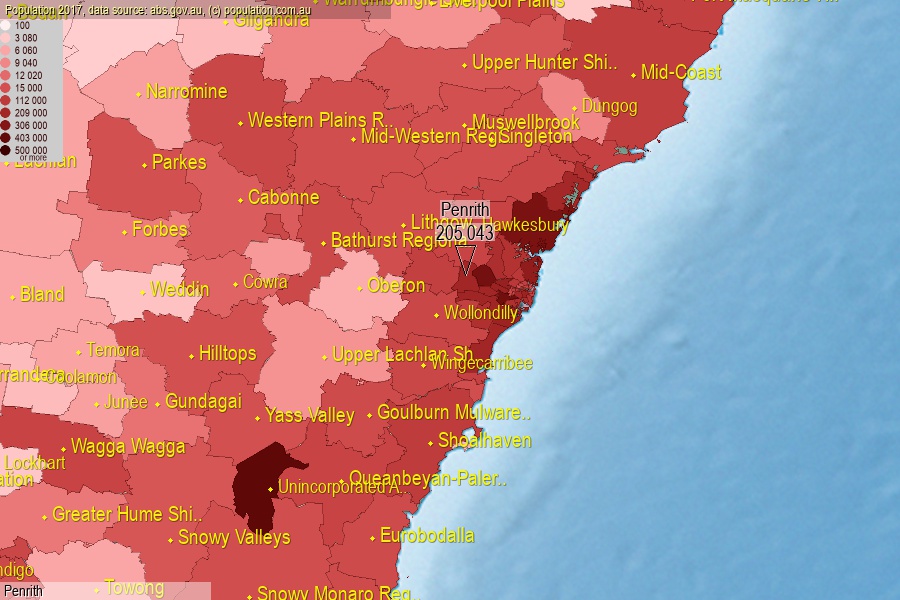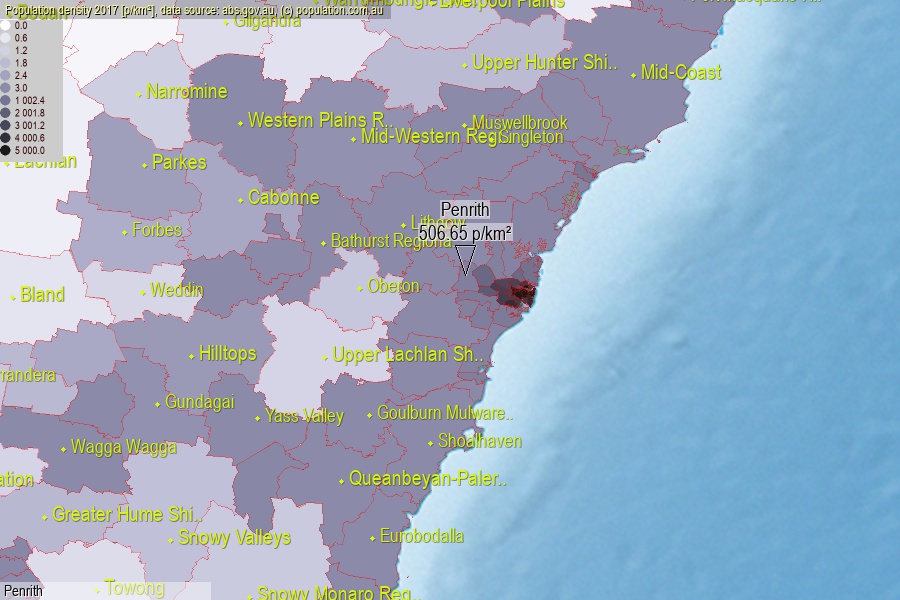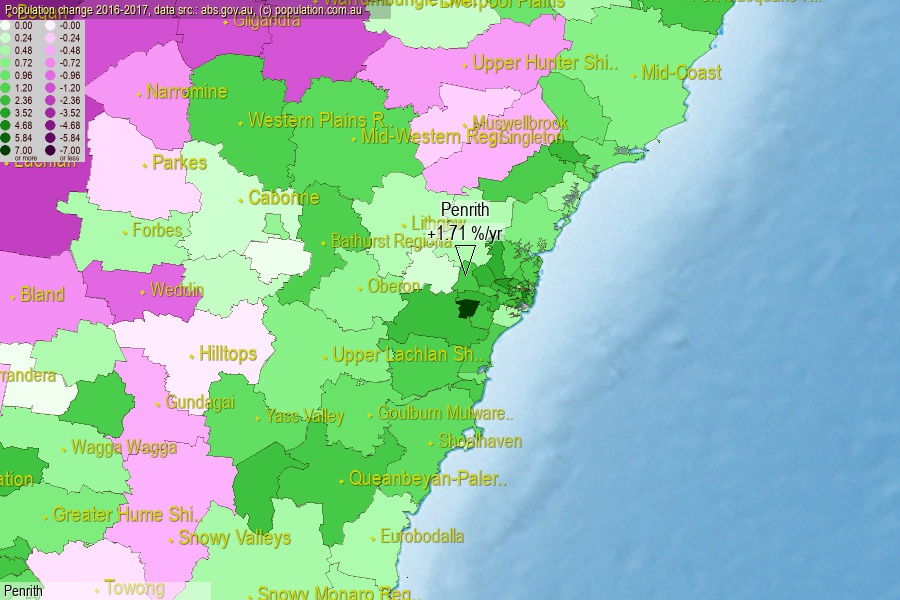 population.com.au
population.com.auLast official estimated population of Penrith City (as Local Government Area) was 205 043 people (on 2017-06-30)[2]. This was 0.83% of total Australian population and 2.577% of NSW population. Area of Penrith is 404.70 km², in this year population density was 506.65 p/km² . If population growth rate would be same as in period 2016-2017 (+1.71%/yr), Penrith population in 2025 would be 234 818. [0]



Click to enlarge. Penrith is located in the center of the images.
Population [people], population density [p./km²] and population change [%/year] [2]
[1996-2001] +0.98 %/Y
[2001-2002] +0.31 %/Y
[2002-2003] -0.12 %/Y
[2003-2004] -0.58 %/Y
[2004-2005] +0.12 %/Y
[2005-2006] +0.15 %/Y
[2006-2007] +0.69 %/Y
[2007-2008] +1.45 %/Y
[2008-2009] +1.14 %/Y
[2009-2010] +0.58 %/Y
[2010-2011] +0.90 %/Y
[2011-2012] +1.46 %/Y
[2012-2013] +1.73 %/Y
[2013-2014] +1.70 %/Y
[2014-2015] +2.02 %/Y
[2015-2016] +1.98 %/Y
[2016-2017] +1.71 %/Y
[0] Calculated with linear interpolation from officially estimated population
[1] Read more about LGA and Australian Statistical Geography Standard (ASGS) on abs.gov.au
[2] Population data from Australian Bureau of Statistics (Population and density: 2017; change: 2016-2017)
[3] Digital Boundaries: Australian Statistical Geography Standard (ASGS) 2016.